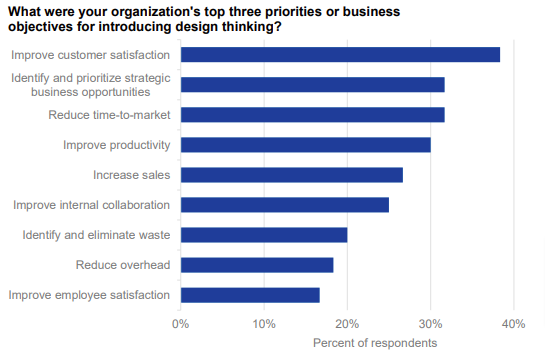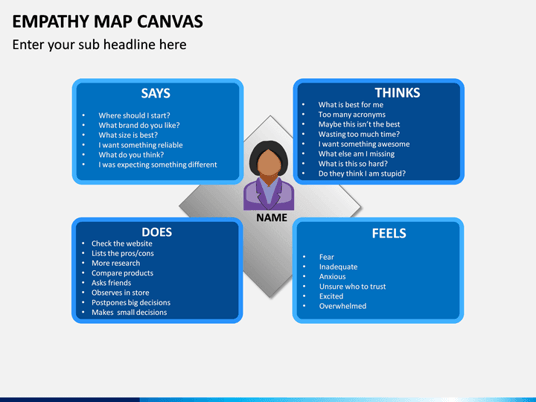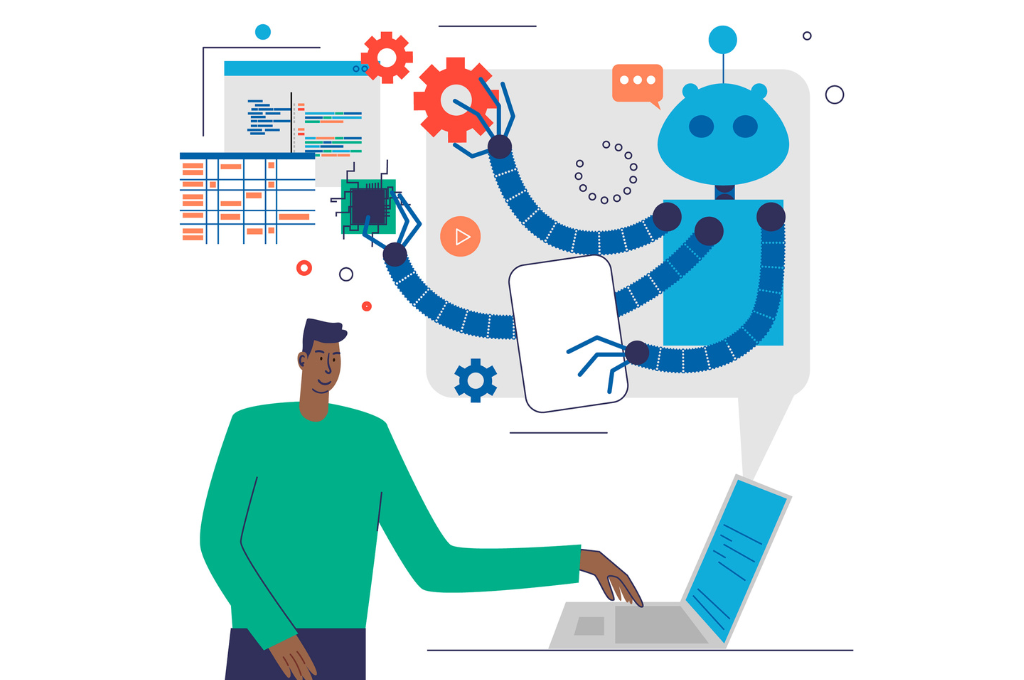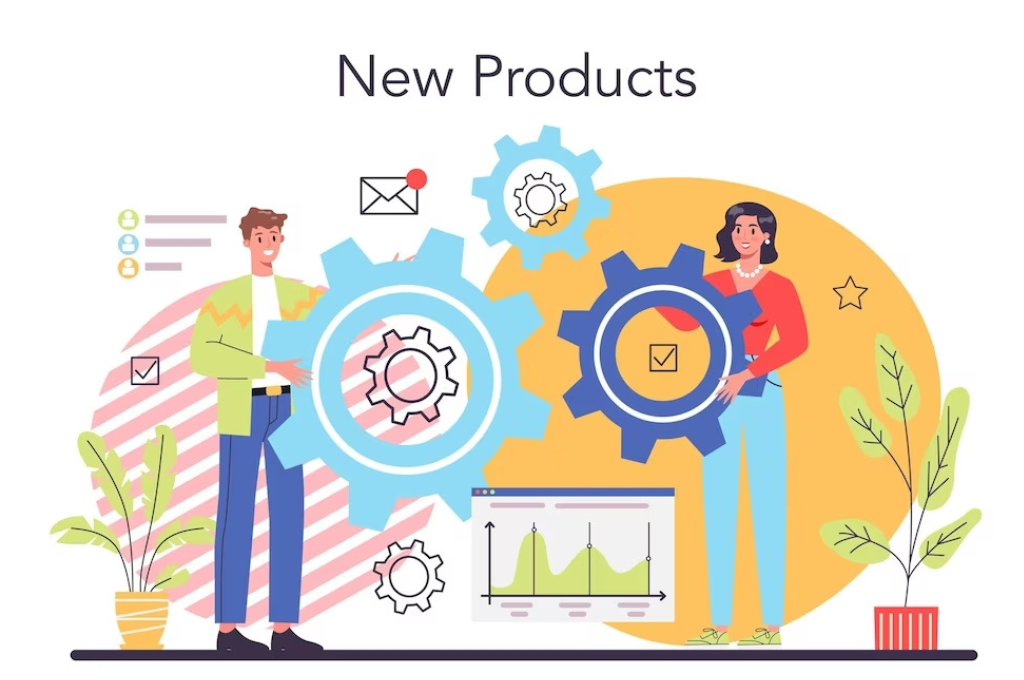In today’s digital realm, design thinking has gained significant popularity, and it is evident from a statistic that 75% of organizations have self-reported their engagement in design thinking (cited by Adobe).
In an interview with Harvard Business Review, Indra Nooyi, former PepsiCo CEO, said that design thinking is the core of everything the organization does - from product development to management of customer interaction after sales.
Wondering what design thinking is and why you should learn about it?
Design thinking is about teamwork, where researchers, designers, sales and marketing executives, and customer success teams collaborate to create an intuitive and user-centric digital product.
Design thinking is an enthralling journey of experimentation, exploration, and evolution. It embraces empathy, user-centered perspectives, collaboration, and continuous iteration and improvement to develop digital products that provide meaningful and out-of-the-box experiences to users.
Still looking for convincing reasons to include design thinking in your product development strategy? Continue reading the article!
Benefits of Incorporating Design Thinking into Product Development
In a response to a survey conducted by IBM, most organizations cited improving customer satisfaction, reducing time-to-market, improving productivity, and increasing sales as the top objectives for incorporating design thinking.
Whether you run a small business or own an enterprise, you can reap numerous benefits and achieve organizational goals by shifting your approach to design thinking.
1. Higher User Engagement and Satisfaction
Customers use any product not because it has great aesthetics or looks good but because it fulfills their needs or solves a pain point. That’s why the design thinking approach keeps customers at the center stage, and all the decisions in product development are guided by empathy instead of profit.
Combining the principles of design thinking with product development is a strategic move that helps brands create products that resonate with users at an emotional level, thereby increasing customer engagement and boosting loyalty.
2. Enhanced User Experience
The solutions based on the design thinking approach are driven by real-world learning and have the potential to create value. The creative and innovative features transform the user experience (UX) from mundane to exceptional.
The solutions based on the design thinking approach are driven by real-world learning and have the potential to create value. The creative and innovative features transform the user experience (UX) from mundane to exceptional.
3. Cross-Functional Collaboration
Design thinking brings together different teams of the organization and leverages their skills, expertise, perspective, and creativity to develop an outstanding product that meets customers’ expectations.
This interdisciplinary collaboration creates a sense of ownership of the product among different stakeholders, empowering teams to work on different aspects of the project and speeding up the design process. It also accelerates decision-making, leading to impactful design choices.
4. Boosts Innovation
Design thinking fosters a culture of innovation in the organization, creating openness for brainstorming, creative ideas, divergent thinking, and inventive solutions. It encourages team members to experiment, think out of the box, and take calculated risks to solve complex problems.
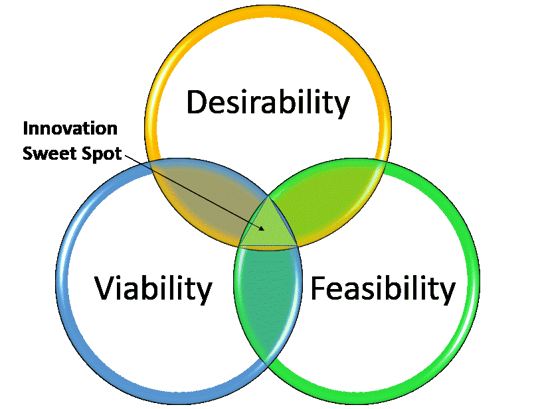
Design thinking takes into account desirability, viability, and feasibility aspects to develop innovative solutions to address the right pain points of customers and ensure sustainability, harnessing the core operational strengths of the organization.
5. Faster Time to Market
Design thinking enables teams to prototype and test products rapidly, helping them figure out and resolve issues proactively. It reduces product design and development and ensures faster time to market, creating real value for customers.
Faster delivery of products subsequently minimizes business expenses and increases ROI, keeping your organization ahead of the curve.
Steps to Embracing the Design Thinking Approach
Below are the 5 steps for implementing design thinking in the organization:
1. Empathize: Put Yourself in Users’ Shoes
The first step is to do thorough research to understand the needs and problems of customers, keeping aside your biases.
You can use the following methods for user research:
-
Survey: Through surveys and survey tools, you can reach wide and diverse customers and get deeper insights into their current challenges, preferences, perceptions about your product, and more. Surveys can be conducted face-to-face or via telephone and email. You need a structured questionnaire to seek relevant responses for making informed decisions pertaining to product development.
-
Observation: Observing the emotions, thoughts, and motivations of customers without being judgmental helps you uncover their pain points and understand their notions and context. It makes it easy for you to connect the dots, find patterns, and empathize better.
-
Interview: The interview lets you unleash the power of good questions to explore the imaginations and expectations of potential customers. You can ask closed or open-ended questions to uncover areas for improvement or find new opportunities.
-
Empathy Map: An empathy map visually represents the feelings and behavior of customers. It helps team members focus on customers’ goals and thoughts instead of preconceptions, providing crucial insights to create a high-quality product.
2. Define: Write a Clear & Concise Problem Statement
The empathize stage reveals detailed information about customers. Analyze this data thoroughly and write a clear, concise, and well-focused problem statement. Compare it to your draft and make changes — mastering how to compare 2 documents can provide a framework for ensuring clarity at each stage of the design process. This statement will be a stepping stone for the next step of design thinking, i.e., ideation.
Include the following elements in your problem statement:
-
Gap: the challenges customers are currently facing, unmet needs, etc.
- Impact: how the problem is impacting the time, cost, or personal experience of customer
-
Orientation: where and when you found the problem
- Importance: why it is important to solve the identified problem
You can use the 5 Ws (why, where, when, what, and who) method, data analysis, or build a user persona for outlining the problem statement.
3. Ideate: Uncover the Possibilities
Leveraging the problem statement as a guide, generate as many creative ideas as you can to solve the problem. While ideating, keep judgments and biases aside and don’t pay heed to feasibility, budgetary constraints, or other technical details.
You can use any of the following ideation techniques:
-
Jot down all ideas that come to your mind on a paper.
- Draw sketches, flow charts, and mind maps to visualize your ideas impressively.
-
Involve all team members to brainstorm ideas.
4. Prototype: Materialize Your Ideas
Select the most promising ideas and create their low-fidelity prototypes, such as storyboards, mockups, wireframes, or sketches, without devoting too much time. These prototypes will give you a clue about the technical feasibility of your ideas and the challenges you will face to bring them to life.
This step will help you make your ideas concrete, tangible, and testable.
5. Test: Gather Insights and Refine
Test the prototype with a small group of people who represent your ideal customers. You can opt for either usability testing or a beta launch.
Observe how the participants interact with and respond to the prototype. Gather their feedback and experience to gain actionable insights into whether the product needs improvement or is ready for the launch.
Brands That Have Leveraged Design Thinking in Storytelling
1. Apple
Apple, the world’s second most profitable company, considers design thinking and user experience in all the smallest details, from the largest product manufacturing to packaging. The company prioritizes prototypes and testing to ensure all its products are user-centric.
The video below depicts a Harvard business case on ‘Design Thinking and Innovation at Apple.’
2. Coca-Cola
The Happiness Machine campaign of Coca-Cola is the perfect example of design thinking. The video shows the Coke machine in an unexpected and candid way, tapping into the emotions of the audience.
Besides this, many renowned brands, such as Airbnb, Netflix, Microsoft, Nike, PepsiCo, Bank of America Corp., etc., increased their profits and net income by leveraging design thinking as an approach to innovation and creativity.
Ensuring Design Thinking Success through Effective Communication
A well-framed training is required to create a design-thinking mindset in the organization. Effective communication with the help of professionally designed and visually impressive presentations keeps all team members on the same stage and fosters a shared understanding, making implementation of this approach effortless.
However, creating an aesthetically pleasing presentation from scratch is a time-consuming task. You can ease the workload by relying on readymade and customizable presentation templates that come with striking design elements and compelling colors.
The Bottom Line
In the era of continuously evolving user expectations, it has become imperative to consider design thinking at the core of digital product development. This user-centric philosophy has the potential to redefine and bring innovation to the product development paradigm. It transforms ordinary interactions into delightful experiences, fostering lasting and meaningful relationships with customers.
If you have not adopted the design thinking approach yet, it’s time to shift your focus and incorporate it without delay. It will help you navigate the competition and drive success for your business.



















